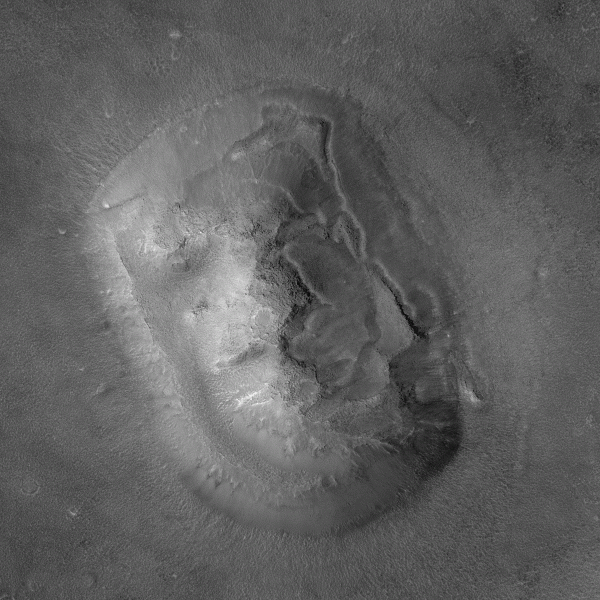

In contrast to the relatively low resolution of the Viking images of Cydonia, these new platforms afford much improved resolution. These spacecraft have included NASA's Mars Global Surveyor (1997-2006) and Mars Reconnaissance Orbiter (2006-), and the European Space Agency's Mars Express probe (2003-). More than 20 years after the Viking 1 images were taken, a succession of spacecraft visited Mars and collected new data from the Cydonia region. Parts of the region were subsequently imaged at far higher resolution by the Mars Global Surveyor, Mars Express and Mars Reconnaissance Orbiter missions. Of the seven good images, the lighting and time at which two pairs of images were taken are so close as to reduce the number to five distinct images. The other eleven images have resolutions worse than 550 m/pixel (1800 ft/pixel) and are virtually useless for studying surface features. Eighteen images of the Cydonia region were taken by the orbiters, of which seven have resolutions better than 250 m/pixel (820 ft/pixel). DiPietro and Molenaar discovered the two misfiled images, Viking frames 35A72 and 70A13, while searching through NASA archives.Ĭydonia was first imaged in detail by the Viking 1 and Viking 2 orbiters. This latter discovery was made independently by Vincent DiPietro and Gregory Molenaar, two computer engineers at NASA's Goddard Space Flight Center.

However, a second image, 70A13, also shows the "Face", and was acquired 35 Viking orbits later at a different sun-angle from the 35A72 image. When the image was originally acquired, Viking chief scientist Gerry Soffen dismissed the "face" in image 35A72 as a "trick of light and shadow". In one of the images taken by Viking 1 on July 25, 1976, a 2 km (1.2 miles) long Cydonian mesa, situated at 40.75° north latitude and 9.46° west longitude, had the appearance of a humanoid "Face on Mars". While accepting the "Face" as a subject for scientific study, astronomer Carl Sagan criticized much of the speculation concerning it in an eponymous chapter of his book The Demon-Haunted World. Image analysis of the original Viking images led a few researchers to suggest that the features of the "Face" might not be an accidental consequence of viewing conditions. Hoagland, among others, believe the "Face" to be evidence of a long-lost Martian civilization along with other features they believe are present, such as apparent pyramids, which they argue are part of a ruined city. tales from Orion which goes to Osiris and Isis, and all the mythology of death and rebirth. The Pyramid and it's two adjacent pyramids, further align with the belt stars of Orion. They say the geometry of the Face on Mars and its pyramid, (part of an ancient city complex), align with the Sphinx and Great Pyramid on Earth. This theory goes along with an alien-human connection that allegedly linked Mars and Earth in the past.

Some researchers believe the Face on Mars is aligned with the Sphinx on the Giza plateau, each having a giant pyramid nearby, though a pyramid on Mars is speculation. I call this a form of divination or rock scrying - looking at any object, and giving it meaning because it looks like something one can relate to. The famous 'Face on Mars' is near the center at the top. Part of the Cydonia region, taken by the Viking 1 orbiter and released by NASA/JPL on J(north is to the upper right). The face on Mars is actually a rock formation not created by aliens.


 0 kommentar(er)
0 kommentar(er)
